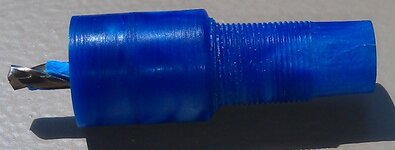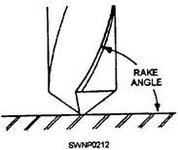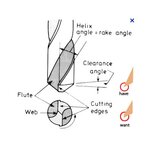duncsuss
Member
I started out by turning the acrylic blank round and putting it into the collet chuck, measured off how long I wanted to make the barrel and marked it on the outside.
I re-read several tutorials and chose to drill out the center in several passes, planning to use a sequence of larger drill bits till I got to the 9mm which I'd tap with 10mm x 1 threads to receive the nib section.
Did you know that a small drill bit gets stuck fast if you don't take care to make sure it doesn't get hot?
And that it will snap off when you try to reverse it out of the hole?
My "flexible response" to this was to turn it down and thread the outside, now I've got a threaded mandrel that I can use when I have to finish the finial end of a cap. :redface:
I re-read several tutorials and chose to drill out the center in several passes, planning to use a sequence of larger drill bits till I got to the 9mm which I'd tap with 10mm x 1 threads to receive the nib section.
Did you know that a small drill bit gets stuck fast if you don't take care to make sure it doesn't get hot?
And that it will snap off when you try to reverse it out of the hole?
My "flexible response" to this was to turn it down and thread the outside, now I've got a threaded mandrel that I can use when I have to finish the finial end of a cap. :redface:
Attachments
Last edited:




